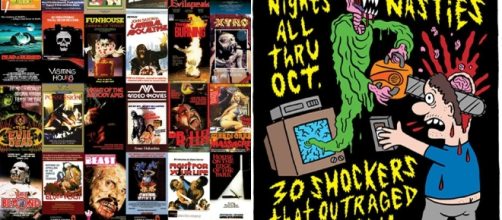It has been some time since the ‘Video-Nasties’ uproar of the early 80’s where a list of films that were banned for overly explicit, violent content. News reporters and commentators such as Mary Whitehouse who fueled the flames of moral panic that swept across the UK helped coin the term used to reference these films in 1982.
BBFC
In 1984 the video censorship act was implemented via legislation courtesy of the Video Recordings Act. The British Board of Film Censor (BBFC) enforced classification of all released film, spawning the age of “mum, can I have this” and “the ‘18’ rating refers to difficulty” that children such as myself used to tiptoe around these laws.
Infringing laws stipulated with this act carries a hefty fine, the law being that it is illegal to supply, distribute or otherwise provide an unclassified video or similarly for classifications given unto anyone below the age of the certificate.
Disposition
The years that followed this act saw several major productions banned from distribution, deemed too obscenely violent for distribution. In recent years; productions such as 1975 Deep River Savages have been rereleased with alterations made to any form of animal abuse, depiction of real death in a none-educational context and rape scenes. These cut variations of these classic films can be seen as a positive result of the act, or indeed a negative if one is so inclined to believe that these films have no solid evidence against them to categorize them as a cause of a murder or rape.
I personally believe individuals who feel compelled to do so use such notions as an escape goat, they have a predisposition to commit such an offence and do so on their own accord.
Predictability
So the BBFC continue to control what is deemed appropriate for our entertainment, nothing has changed here. I have however come to a recent epiphany while watching Stephan Kings IT.
It seems to me that the days of screaming during screenings have passed, be it we are overly desensitized to the violence or what I am debating could be the real cause for our lack of interest. I believe we have gotten to the stage of technological advancements in film, with flashy CGI in films that the producers boast as a selling point, that it has taken away the essence of storytelling.
We have come to expect fast-passed, CGI filled, adrenalin fueled rollercoaster rides where we follow a protagonists journey of making friends to seeing each of their inevitable demise until it is the lead character alone at the end which defeats the following evil to the point of which it is so predictable they practically write themselves. I am a firm believer in the use of practical effects as seen on 'The Thing' and n the recent 'Evil Dead'.
Imagination
It seems as though the list of banned films have been thinning out. The most recent examples have been banned for depicting scenes of sexual violence or animal abuse, and so they should. The days of ‘too violent’ seem to be passing, but is that due to our expectation of seeing violence; but what happened to the days of being afraid of the death and mutilation we didn’t see?
As an audience we expect to see everything because filmmakers believe they have the technology available to make it so realistic that we are stunned by their computer-generated ‘wizardry’. This, even today, is not the case. Films such as Alien relied upon a solid buildup towards the reveal of the creature, the anticipation of which was only skyrocketed by piece-by-piece reveals of the creature that sparks our imagination. It is as though they assume today’s audiences do not posses the attention span to continue to watch a film without these aforementioned effects that they use to generate and show the antagonist within the first few minutes of watching. It is as though they have forgotten the power of the human mind and our fear of the unknown, perhaps hiding the villain once again would reignite our imaginations and produce a horror that would truly scare us again.

